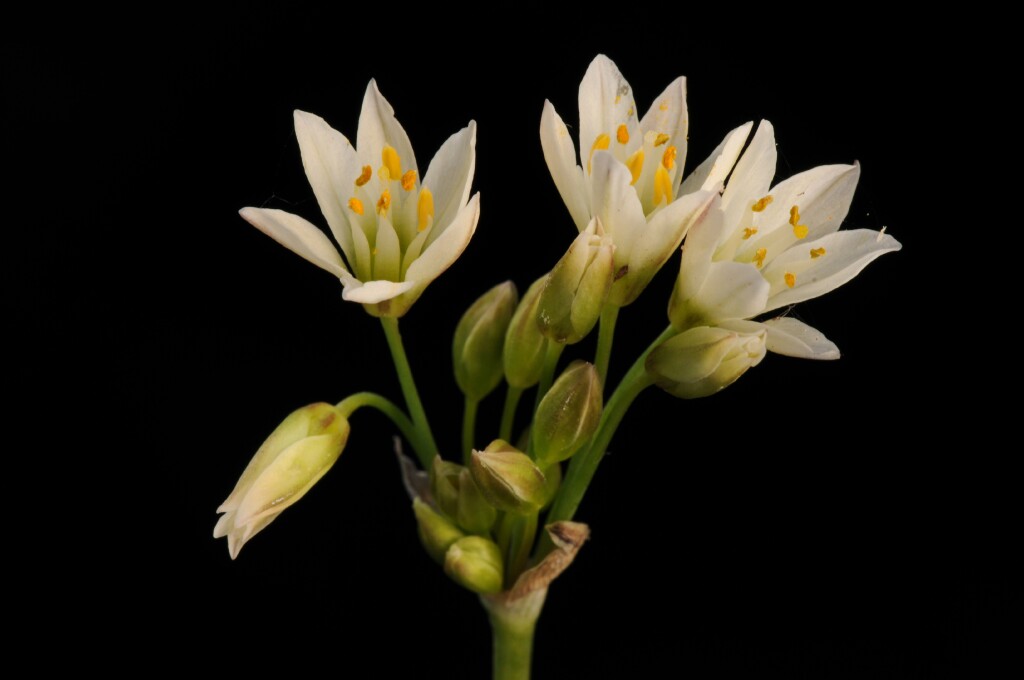Nothoscordum borbonicum
Kunth Fragrant False-garlicBulb ovoid, c. 1.5–2.5 cm diam., with numerous bulblets. Scape terete, solid, 20–100 cm high. Leaves 3–10, weakly erect, flat, with sheathing base, 15–60 cm long, 5–18 mm wide. Umbel loose, 8–20-flowered; spathe-bracts papery, ovate, c.1 cm long; pedicels 1.5–5 cm long; flowers scented, perianth segments obovate, 1–1.5 cm long, fused basally for c. 2 mm, mostly white, with reddish mid-vein; stamens slightly shorter than perianth segments; capsule 6 mm long; seeds c. 2 mm long, with finely wrinkled testa. Flowers Nov.–Feb.
MuM, Wim, VVP, VRiv, GipP, Gold, HSF. WA, SA, Qld, NSW, LHI, NI, ACT, Tas. Commonly a garden weed, and difficult to eradicate due to the numerous bulblets. Occasionally a weed of crops and pasture, but along the Wimmera River at Horsham it is reported as being abundant. Of scattered occurrence in Victoria, mostly north and west of Melbourne (Mildura area, Dimboola, Warracknabeal, Meredith, lower Goulburn valley, Melbourne suburbs, Dromana).
The identity of the plants naturalised in Australia is uncertain. It is unclear whether one or two species are present, and what name(s) should be applied. Ravenna (1991) treated Nothoscordum gracile and N. borbonicum as separate species, and he applied the name Nothoscordum borbonicum to the cosmopolitan weed. Not all workers have followed Ravenna (1991), and some workers treat N. borbonicum as a taxonomic synonym of N. gracile (the earlier published name). For pragmatic reasons, the nomenclature used here follows that of the Australian Plant Census.
Conran, J.G. (1994). Liliaceae. In: Walsh, N.G.; Entwisle, T.J., Flora of Victoria Vol. 2, Ferns and Allied Plants, Conifers and Monocotyledons, pp. 637–686. Inkata Press, Melbourne.
 Spinning
SpinningRavenna, P. (1991). Nothoscordum gracile and N. borbonicum (Alliaceae). Taxon 40: 485–487.


